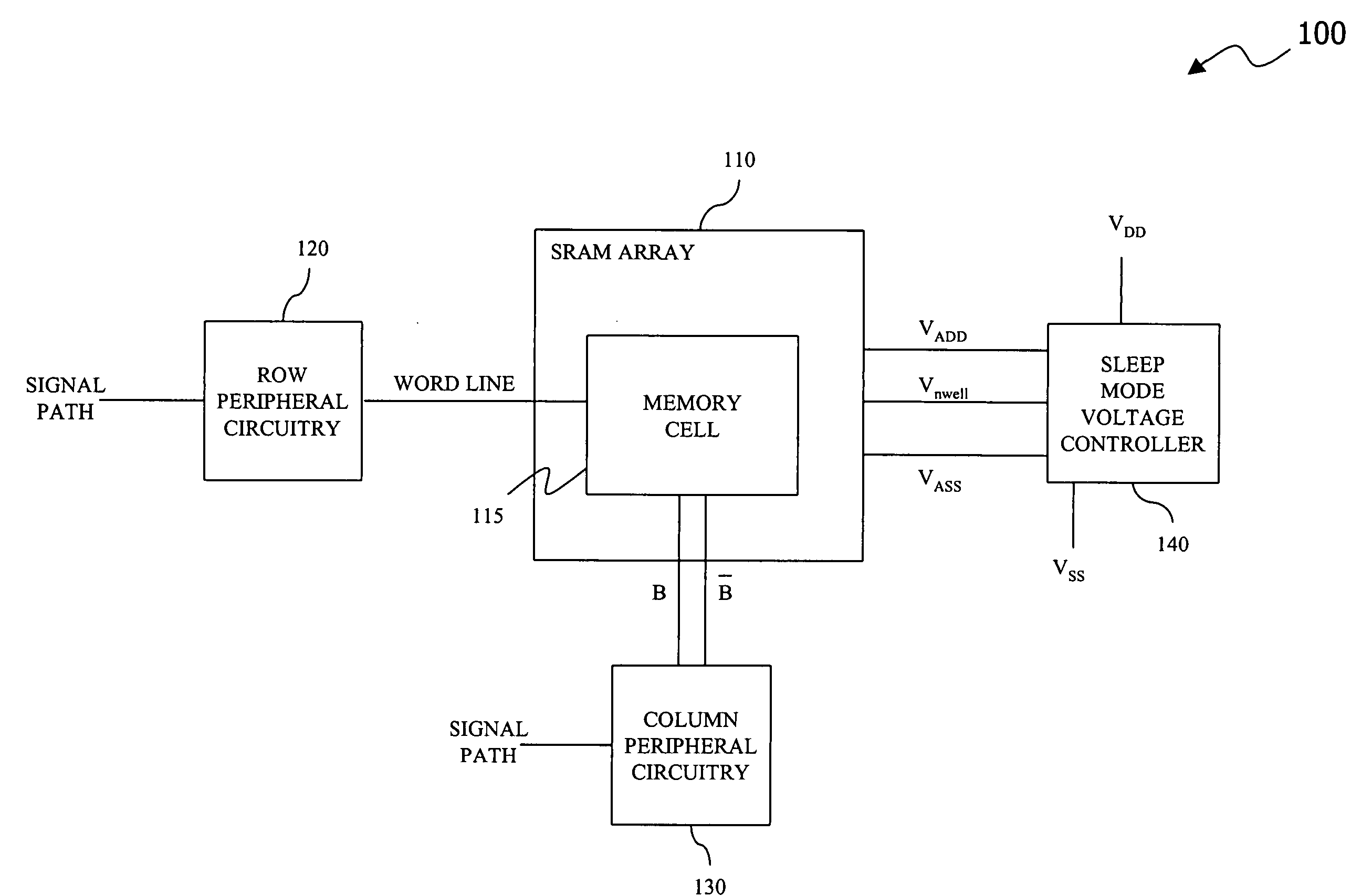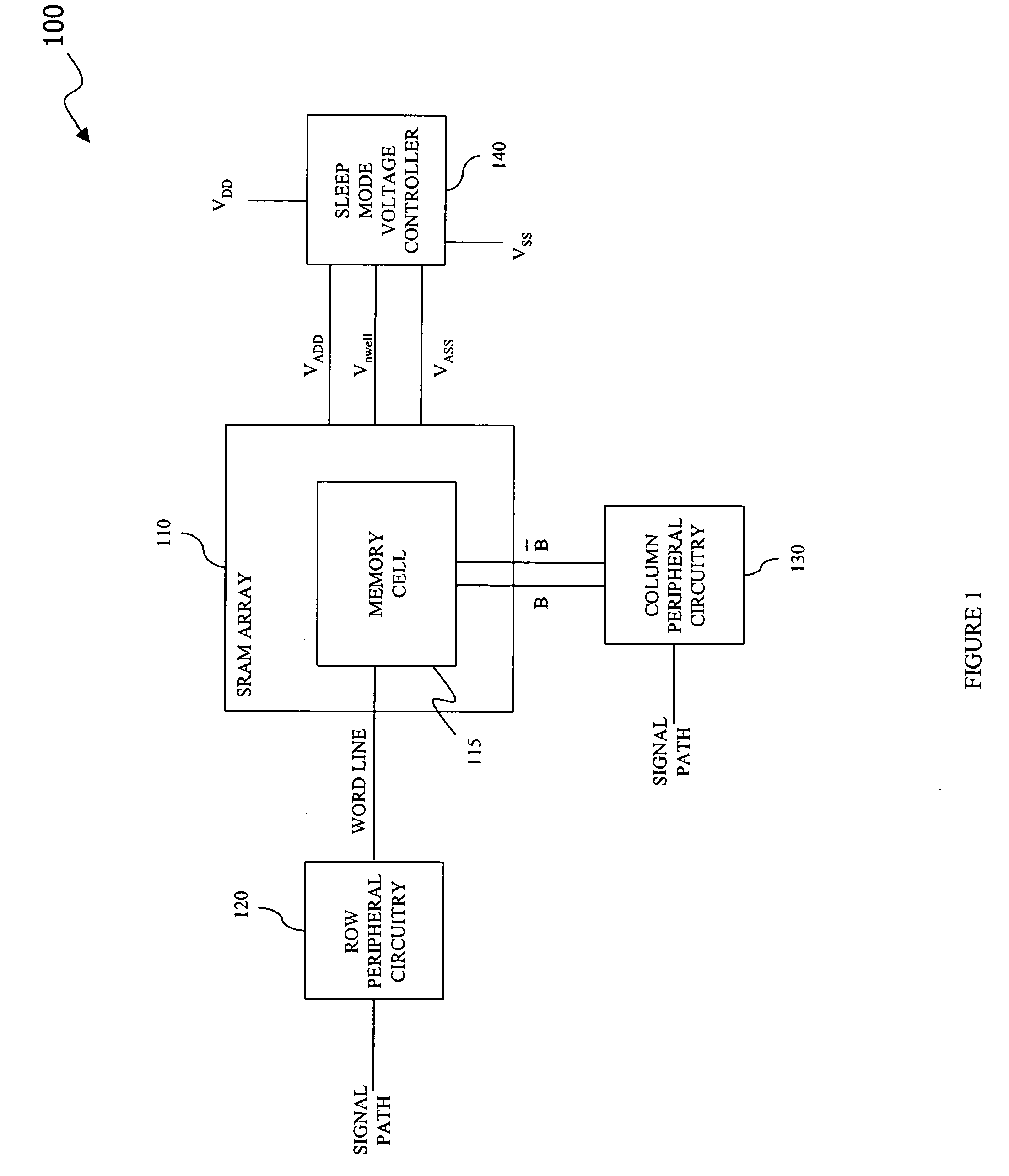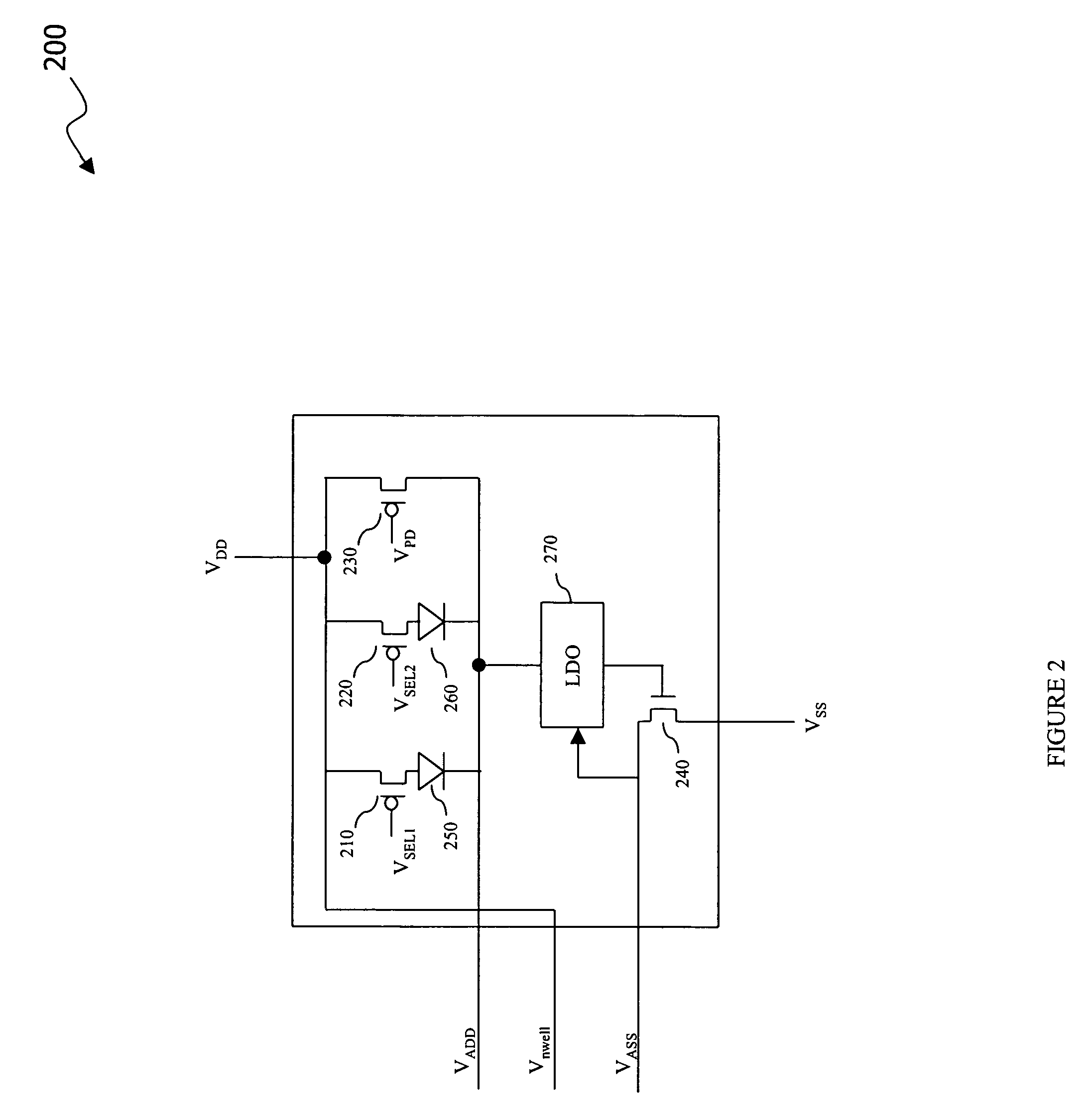SRAM device and a method of operating the same to reduce leakage current during a sleep mode
a technology of static random access memory and leakage current, which is applied in the field of memory devices, can solve the problems of unacceptable current leakage, low leakage rate, and low leakage rate, and achieve the effects of reducing subthreshold current leakage, reducing total leakage current, and increasing diode gate leakag
- Summary
- Abstract
- Description
- Claims
- Application Information
AI Technical Summary
Benefits of technology
Problems solved by technology
Method used
Image
Examples
Embodiment Construction
[0020] Referring initially to FIG. 1, illustrated is a circuit diagram of an embodiment of an SRAM device, generally designated 100, constructed according to the principles of the present invention. The SRAM device 100 includes an SRAM array 110, row peripheral circuitry 120, column peripheral circuitry 130 and a sleep mode voltage controller 140. Typically, the SRAM array 110 includes multiple memory cells organized in a matrix of columns and rows with corresponding multiple word lines and bit lines. For example, the SRAM array 110 may have 256 columns and 256 rows of memory cells. For ease of discussion, however, only a single memory cell 115 of the SRAM array 110 is illustrated. Accordingly, a single word line and bit line pair are illustrated and discussed along with the associated row and column peripheral circuitry 120, 130.
[0021] The SRAM device 100 may be a memory component for an associated microprocessor, digital signal processor (DSP), application-specific integrated cir...
PUM
 Login to View More
Login to View More Abstract
Description
Claims
Application Information
 Login to View More
Login to View More - R&D
- Intellectual Property
- Life Sciences
- Materials
- Tech Scout
- Unparalleled Data Quality
- Higher Quality Content
- 60% Fewer Hallucinations
Browse by: Latest US Patents, China's latest patents, Technical Efficacy Thesaurus, Application Domain, Technology Topic, Popular Technical Reports.
© 2025 PatSnap. All rights reserved.Legal|Privacy policy|Modern Slavery Act Transparency Statement|Sitemap|About US| Contact US: help@patsnap.com



